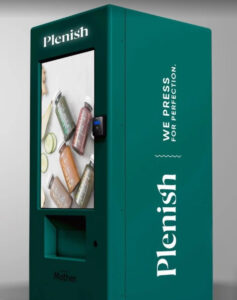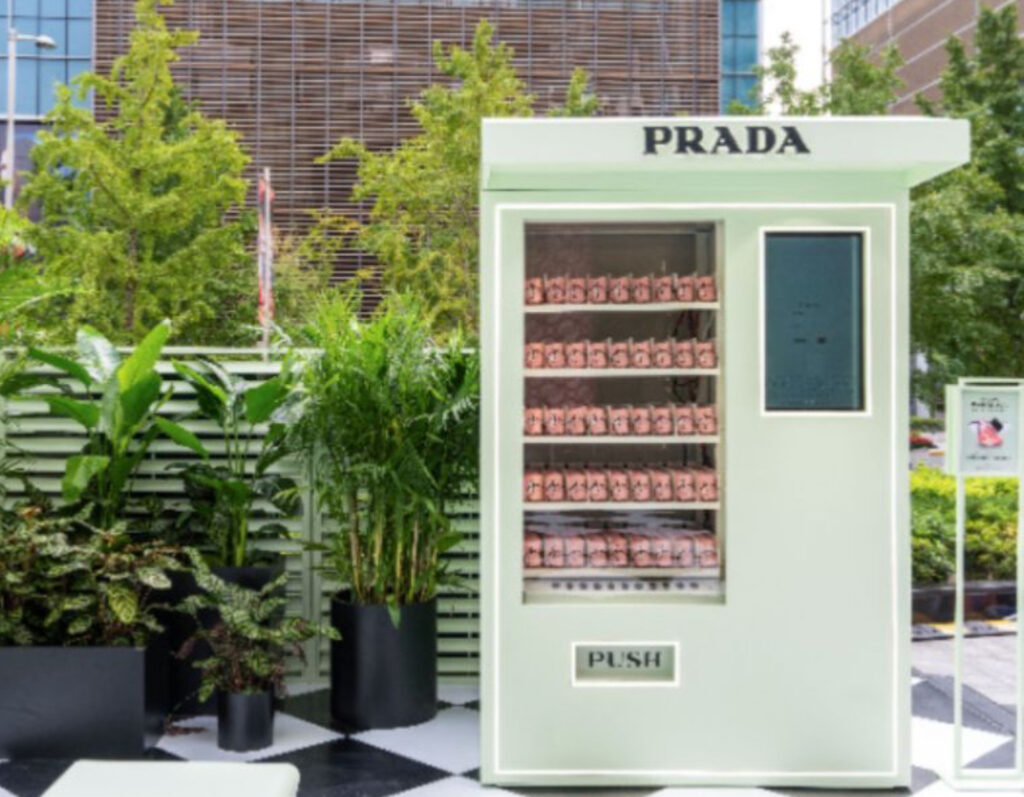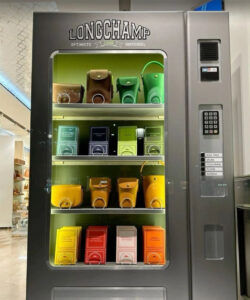
Vending machines were once seen as a symbol of convenience—offering snacks, drinks, and simple essentials in places like office buildings, schools, and train stations. However, with the rapid advancement of technology, vending machines have undergone a major transformation. No longer the bulky, cash-only machines of the past, today’s vending machines are tech-driven, interactive, and brand-immersive, offering an innovative way for companies to reach their audiences.
From high-end luxury brands like Prada and Longchamp to financial services like Revolut and even health-conscious vending in hospitals, the use cases are expanding at a rapid pace. What was once simply a way to grab a quick drink or snack has evolved into a direct-to-consumer experience that is quirky, fun, and highly shareable on social media.
This article explores the rise of modern vending machines, how brands are using them to create memorable experiences, and why they represent one of the most innovative and engaging retail strategies in today’s landscape.
The Evolution of Vending Machines: From Past to Present
The Old Vending Machine Experience
For decades, vending machines were clunky, unreliable, and uninspiring. They were often seen as a last resort for snacks and drinks, plagued by issues such as:
•Limited payment options (coins and cash only).
•Frequent malfunctions (products getting stuck, change not being returned).
•Basic product offerings (chips, soda, candy bars).
•No interactivity or engagement—just push a button and hope the item drops.
While vending machines served a functional purpose, they rarely provided an experience or an opportunity for brands to engage with consumers in a meaningful way.
The Rise of Smart, Interactive Vending Machines
Today, vending machines are high-tech, customizable, and engaging. They can be equipped with:
•Touchscreens and AI for product recommendations.
•Photobooths and digital displays for shareable content.
•Refrigeration and climate control for fresh food, luxury goods, and even pharmaceuticals.
•Mobile and contactless payments, making transactions seamless.
•Data collection to provide brands with insights on purchasing behaviors.
These enhancements have opened new possibilities, allowing brands to use vending machines not just for selling products, but for experiential marketing, brand awareness, and data-driven retail innovation.
How Brands Are Using Vending Machines for Success
Taking Products Directly to Consumers
One of the biggest advantages of vending machines today is that they eliminate the need for traditional retail spaces. Instead of waiting for consumers to come to them, brands can place vending machines in high-traffic locations—airports, train stations, shopping malls, concerts, and even hospitals—to directly reach their target audience.
Case Study: Revolut at Airports
Fintech giant Revolut leveraged vending machines to promote its financial products. By placing machines in airports, Revolut saw a massive increase in people signing up for cards and accounts on the spot. The machine offered convenience—travelers needed an international banking solution, and Revolut was right there when they needed it.
Case Study: Rockflower at Train Stations
UK-based Rockflower successfully introduced vending machines at train stations, selling fresh flowers in an innovative way. Travelers could quickly grab a bouquet on the go, making flower purchases spontaneous and accessible.
This kind of strategic placement eliminates friction in the consumer journey and meets customers exactly where they need the product most.
Creating a Fun, Shareable Experience
One of the biggest reasons brands are investing in vending machines is their shareability. When a vending machine is quirky, unexpected, or interactive, people naturally want to talk about it, post about it, and share it on social media.
Example: High-Fashion Vending Machines (Prada, Longchamp, etc.)
Luxury brands like Prada and Longchamp have experimented with vending machines that offer high-end handbags and accessories. These aren’t just about convenience—they tap into exclusivity, surprise, and impulse purchasing.
Imagine a vending machine where you can buy a luxury handbag with just a tap of your card. It turns what would have been a standard purchase into an experience worth sharing—both in real life and online.
Example: Coca-Cola’s Hug Machine
Coca-Cola created an interactive “Hug Me” vending machine where customers could get a free Coke simply by hugging the machine. This simple, fun idea turned a product purchase into an emotional, shareable experience, generating millions of organic impressions.
Example: Kiehl’s Skincare Sampling
Skincare brand Kiehl’s installed vending machines at airports and shopping malls, offering free skincare samples to consumers who scanned a QR code. Not only did this generate leads, but it also encouraged people to post about their free samples, giving Kiehl’s free marketing exposure.
Encouraging Exploration, Curiosity, and Impulse Purchases
Consumers today want more than just transactions—they want experiences. Modern vending machines offer a sense of curiosity and discovery, making shopping fun again.
Example: Uniqlo’s Clothing Vending Machines
Japanese brand Uniqlo introduced clothing vending machines in various locations, offering consumers instant access to t-shirts and lightweight jackets. This helped Uniqlo reduce retail space costs while making its products easily accessible on the go.
Example: Healthy Food in Hospitals (NHS Vending Machines)
The UK’s National Health Service (NHS) has rolled out healthy vending machines in hospitals, replacing traditional snack vending with nutritious food options. These machines help patients and visitors access healthier choices in places where convenience is crucial.
Example: Sneaker and Streetwear Vending Machines
Streetwear brands have used vending machines for limited-edition sneaker drops, creating a hype-driven experience where consumers can win or purchase exclusive items instantly. This drives FOMO (fear of missing out) and makes the buying process more exciting.
As brands continue looking for cost-effective, innovative ways to engage consumers, vending machines will play an increasingly important role in modern retail and marketing strategies.
Thoughts
Vending machines have come a long way from their old, outdated versions. With technology, interactivity, and strategic brand placement, they are now one of the most innovative ways for brands to engage consumers.
Whether it’s luxury handbags at an airport, fresh flowers at a train station, or healthy snacks in a hospital, vending machines are reshaping the retail landscape, making shopping more accessible, exciting, and shareable.
No comments yet.








